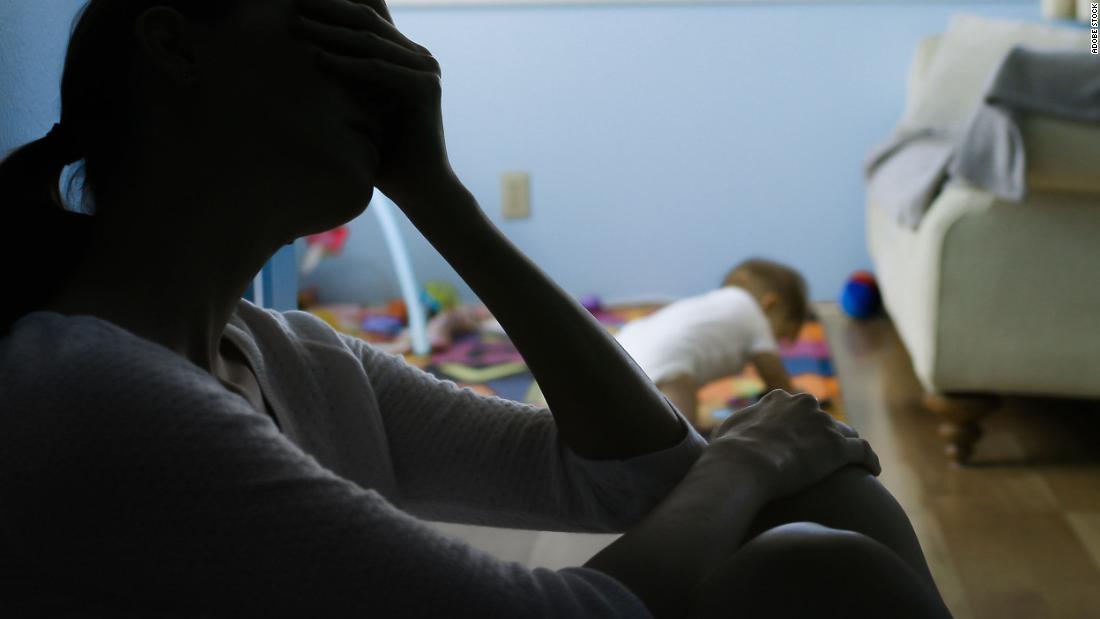That has left many single parents skipping meals so their children have plenty of food, providing less healthy meals for their families, and culling expenses to the point where any unforeseen cost could mean more debt — or worse.
“It’s a really tricky game to figure out what can I do, what can I not do and how can I squeeze a little more money here and there?,” said Elisabeth Mendes Saigg, 33, whose husband passed away from sudden heart failure in 2020 at the age of 37. Mendes Saigg was left to raise their two-year-old son, Khayonni, on her own.
For a time after her husband’s death, she received food stamps to help with grocery costs, but after she was able to start working again — teaching high school biology — she was no longer eligible. Her de ella $25,000 annual income de ella will also soon make her ineligible for the spousal death benefits she’s received from Social Security. Between the loss of the survivor’s benefits and the nutrition assistance, the Fort Pierce, Florida, mother will have $700 less on hand per month this year than she did last year.
She says she has cut back across all aspects of her daily life: She’ll keep the air conditioner set warmer to help ease energy bills (forgoing the luxury of a cool house on hot Florida days), she is no longer able to enroll her son in gymnastics, she’s taken on an extra tutoring role at work, and she’s made a box of pasta suffice for four meals for herself so that Khayonni, now three-and-a-half years old, could enjoy his favorite hot dogs and salads .
Living paycheck to paycheck
While adults overall consistently report a solid gap between average monthly spending and income, single parents have a much narrower difference, said John Leer, chief economist at Morning Consult.
“If there are no variables to our month, no one has to go to the doctor, no one has to go to the dentist … then all of my bills get paid with less than $100 left over every month. If there is a variable of something going wrong, then something always gets paid late,” said Shae Beery, a 44-year-old Nashville, Tennessee, resident who has raised her now 10-year-old son, Kingston, on her own.
When prices start increasing, single-parent families have less ability to cut back further, so they buy less food at the grocery store and end up putting more expenses on their credit cards. During the past three months, more of those balances are going unpaid, Leer said.
“On a month-to-month basis, single parents really don’t have a lot of extra room to help cover costs,” he told CNN Business. “They’re really living paycheck to paycheck. They’re taking their incomes and diverting them immediately into expenses, which means that they don’t have savings that allows them to weather any unforeseen storm.”
In Brooklyn, New York, Jessica Ridout, 41, and her two children, aged 8 and 10, have adapted to a more vegetarian diet because of the rising prices at the grocery store.
Pre-pandemic, Ridout would spend about $50 to $75 per week on food. That weekly bill now is $100 to $125, she said.
No longer making it in the basket are items like sparkling water, treats, junk food and, especially lately, meat.
“Meat is expensive, and I would be lying if I didn’t say I wouldn’t kill for a nice piece of salmon once a week,” she said.
But she can’t justify the indulgence of a $17 piece of salmon when she can use veggies to make two weeks’ worth of lunches for that cost, she said.
The belt-tightening is not just at the grocery store. A couple of weeks ago, Ridout’s car started smoking. After sending a video to a friend, it was determined that an oil leak was the likely culprit. Rather than take it to a mechanic, she went to AutoZone, spent $14 on an oil leak seal additive, and crossed her fingers.
Fears of a recession
“The likelihood of us experiencing an additional downturn is increasing right now, which is going to likely expose some of those most vulnerable households,” Morning Consult’s Leer said.
Since the onset of the pandemic, the Food Bank of Contra Costa and Solano counties in Northern California’s East Bay has seen a 40% to 60% increase in its client base, from 178,000 people per month to as high as 300,000 clients per month, said Cassidie Bates, the food bank’s government and public affairs manager.
She has also seen an uptick in the number of clients coming to the food bank, including people who had never previously experienced food insecurity.
“One bad month is enough to set some people back,” she said, adding that she is anticipating the increased demand to remain for at least the next few years.
“When individuals fall into food insecurity and poverty, it’s very cyclical, difficult to escape and hard to get back on your feet,” she said.
Living with a disability for 32 years and on a fixed income, 68-year-old JR Young of Colorado Springs, Colorado, has plenty of experience in making every dollar count — a prospect made easier with the support of his wife as they raised their now 17-year-old granddaughter.
But after Young’s wife passed away in March 2021, meeting those monthly expenses got increasingly challenging, especially when prices started to rise. Canned and frozen food has now replaced fruits and vegetables; the roast beef he buys for his granddaughter has gone up by 33%; and the end of the month typically means that Young doesn’t have fresh milk in the house and he’s surviving solely on peanut butter sandwiches.
“It’s right down to the wire at the end of the month,” he said. “I’m monitoring my servings, monitoring slices of bread, monitoring sticks of butter just to be sure.”
.
